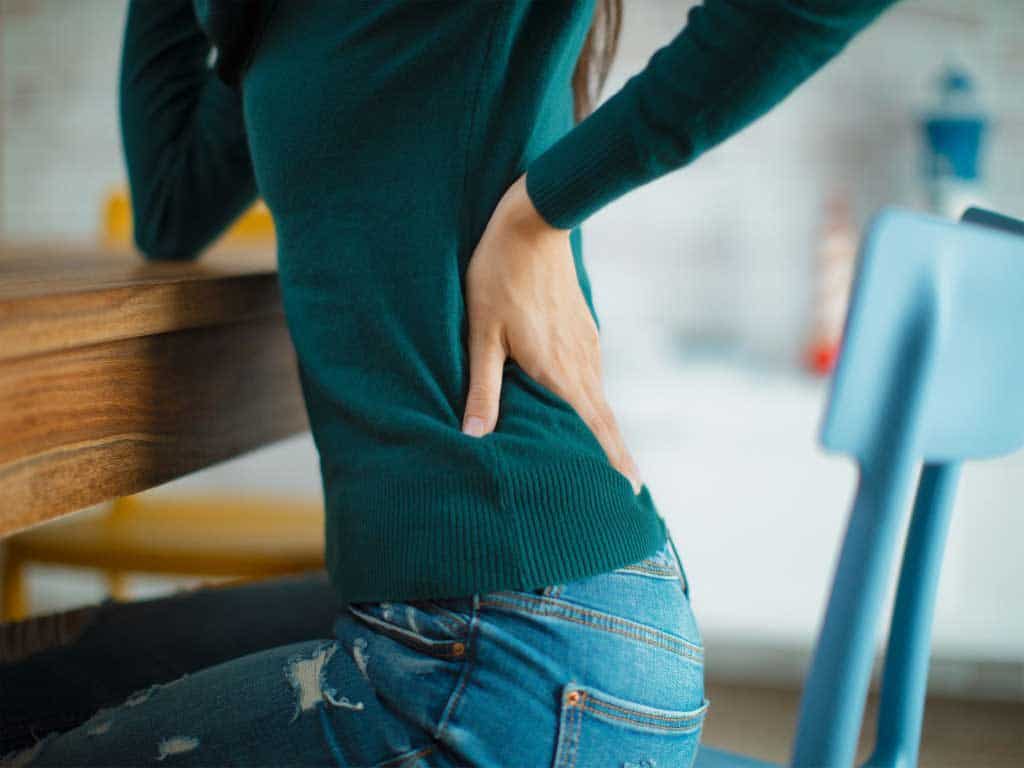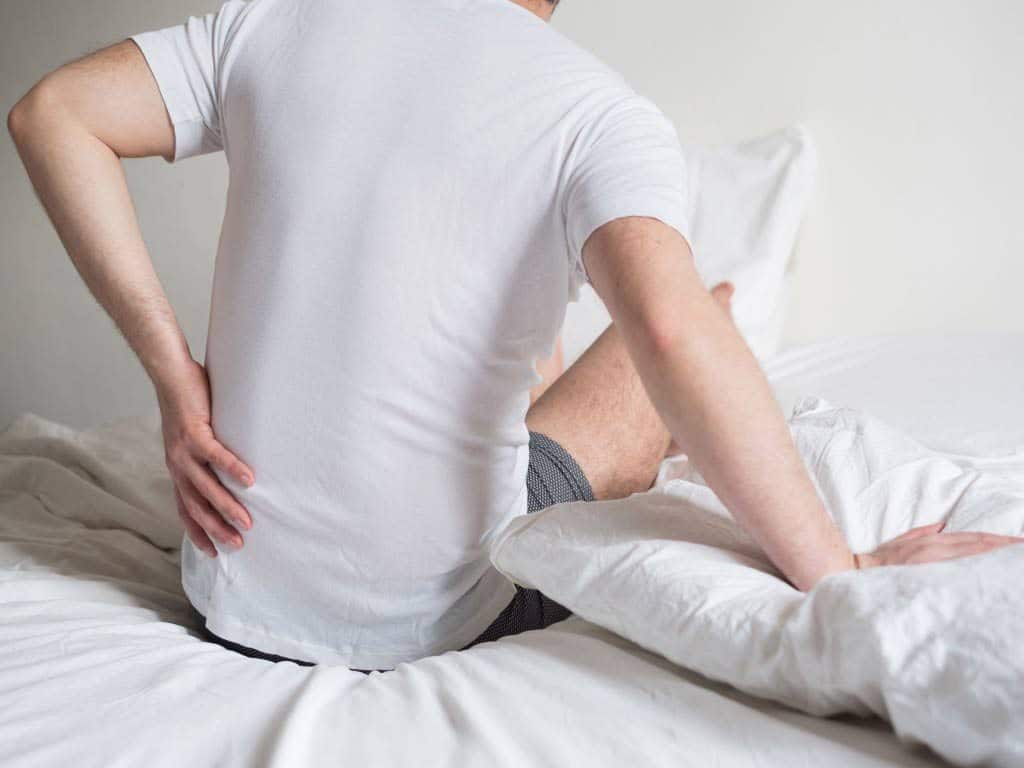
Lower back pain is one of the debilitating conditions affecting many people. It can happen at any age and happen for various reasons. The common lower back pain causes are muscle strain, muscle stiffness, degenerative disc disease, and other chronic conditions. Individuals may treat back pain through medications, heat and cold therapy, and stretches. These pain relief methods are easy to follow and can be very effective at reducing pain and discomfort.
Back pain can be acute (short-term) or chronic (long-term), depending on the cause. It can range from mild to severe, interfering with daily activities and needing medical interventions. Thus, it is vital to know the causes and treatment options to manage back pain effectively. The following sections will present the leading causes or conditions contributing to pain in the lower back, home treatments, and stretches for pain alleviation.
Identifying Lower Back Pain Causes
The first step to successful pain relief is understanding the lower back pain causes. One common reason for back pain is muscle soreness and strains. It can occur due to overstretching or overusing muscles, causing them to swell and stiffen. When the muscles become strained, they can spasm and cause pain.
Another cause is degenerative disc disease. This condition occurs due to age-related changes in the disc between hip joints and vertebrae. The disc acts as a shock absorber, protecting the back from sudden impact during activities. When they wear down, it leads to a decrease in flexibility and cushioning of the spine. Common conditions include herniated discs, spinal stenosis, and bone spurs.
Underlying medical conditions can also cause chronic pain in the lower back. This includes sciatica, osteoarthritis, and fibromyalgia. Sciatica is due to nerve compression, causing pain and numbness in the lower back, buttocks, and legs. Osteoarthritis is a degenerative condition where the cartilage between joints wears down. Lastly, fibromyalgia is an autoimmune condition that causes widespread muscle pain and fatigue.
Risk Factors
- Poor posture and body mechanics can contribute to lower back pain.
- Strenuous activities that involve repetitive motion such as bending, twisting, and lifting heavy objects.
- Age. Back pain is more common in people aged 30 and older.
- Lifestyle and occupation. Sitting or standing all day can cause muscle soreness.
- Lack of exercise or physical activity can weaken the muscles supporting the lumbar spine.
- Poor diet. A diet high in processed food, trans fat, and refined sugars may lead to chronic inflammation.
- Smoking can impair blood flow to the spine.
- Obesity. Excess weight puts extra strain on the lower back.

Home Treatments for Lower Back Pain Causes
Home treatments can help alleviate the symptoms. However, it does not cure the causes of lower back pain. Moreover, it should not replace medical treatments if the cause is severe. An effective method is applying ice or heat. Ice packs can help reduce inflammation and numb the area, while heat packs help relax the muscles and increase blood flow.
Over-the-counter pain relievers can help manage acute back pain. Non-steroidal anti-inflammatory drugs (NSAIDs) like ibuprofen and naproxen can reduce pain and swelling. Pain relief may take effect within a few minutes and last for hours. However, health experts advise taking NSAIDs only for acute pain. Long-term intake may risk developing side effects.
Individuals who want to avoid medicines may use TENS (Transcutaneous Electrical Nerve Stimulation). It is a portable therapy device that helps reduce pain through mild electrical currents. By placing the electrodes on the affected area, it stimulates the nerves to block pain signals. This method is ideal for people with chronic pain as it does not have long-term side effects. Furthermore, the device is non-invasive and easy to operate.
When To See A Doctor
Back pain can easily go away with rest and home remedies. However, if the pain does not improve with conservative treatments, it is best to seek medical help. In addition, it is advisable to see a health care professional if the pain is severe and persists for more than a week.
It is also crucial to seek medical attention if back pain comes with numbness or weakness in the legs. Additional symptoms to look out for are unexplained weight loss and loss of bowel and bladder control. This could indicate a more severe condition, such as cauda equina syndrome.

Stretches to Prevent Lower Back Pain Causes
Physical therapy is another recommended pain relief method for various types of lower back pain. It includes targeted exercises and stretches to improve back conditions. Stretching helps lessen muscle stiffness, improving flexibility and range of motion. It can alleviate tension and stress on the muscles and joints of the lower back.
One stretch that can help relieve lower back pain is the hamstring stretch. Tight hamstrings can contribute to lower back pain by pulling on the pelvis and causing it to tilt forward, putting strain on the lower back. Another beneficial technique is the hip flexor stretch. It helps loosen the hip flexors and relaxes the lower back.
The Cat-Cow stretch targets the lower back muscles and helps release muscle tension and tightness. Additionally, the piriformis stretch helps relieve stiffness in the glutes and lower back. Finally, some exercises help strengthen the back muscles and prevent lower back pain causes from aggravating. Regular exercises and stretches help build the core muscles, reducing the risk of pain or injuries.
How To Perform a Basic Stretch
Performing a basic stretch is fairly simple and can be done by anyone, regardless of their fitness level. To begin, find a comfortable space to sit or stand without any obstructions. Start by targeting a specific muscle group. Carefully extend the target muscles or area into a stretch, engaging the back or abdominal muscles.
Hold the position for 20-30 seconds after feeling a slight tension in the muscles. Repeat on the other side for a balanced stretch. Avoid bouncing while stretching, as this may cause injury. Instead, focus on slow and controlled movements, gradually increasing the intensity as the muscles warm up.
Conclusion
The causes of lower back pain vary according to several factors. The leading reasons are muscle strains, degenerative disc disease, and underlying pain conditions. Fortunately, several home treatments can help alleviate the symptoms, such as heat and cold compress, OTC medications, and TENS. Exercises and stretches can also help reduce pain and improve flexibility. Thus, improved muscle strength helps prevent the risk of injuries. It is advisable to consult a physical therapist for guidance on appropriate exercises.
In most cases, back pain resolves with proper care and preventive measures. However, if severe pain persists or worsens, it is best to seek medical help. A health professional can diagnose the cause and recommend a treatment plan. The right care, lifestyle modifications, and effective treatments can help individuals manage pain without interfering with normal activities. These simple techniques can help manage lower back pain effectively and minimise the need for intrusive or risky procedures.







